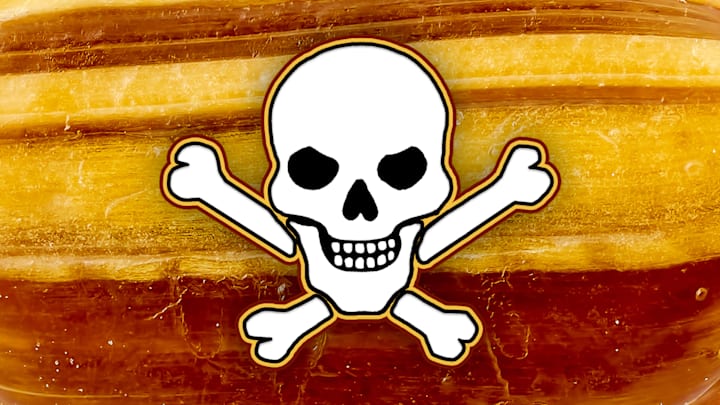Five-year-old Orlando Burran was already dying when the doctor arrived. On Halloween afternoon of 1858, his family in Bradford had been struck by sudden illness. Parents Mark and Maria, along with their two lodgers, were weak with vomiting and stomach pains. But it was Orlando and his brother John Henry, 2, who were gravely ill.
Dr. John Henry Bell was called to the residence, where he found Orlando “quite pulseless, his countenance pale, his lips blanched and livid, his eyes sunk and half closed.” The doctor told the distraught parents there was nothing he could do. Orlando died within 15 minutes of the doctor’s arrival. John Henry followed soon after.
Bad Humbugs
There was one thing each household member had in common: They had eaten peppermint humbugs, a popular candy, that Mark had bought the previous evening from Bradford’s Green Market. From the household’s symptoms Dr. Bell quickly determined they had been poisoned. He tested one of the humbugs with the Reinsch test—heating the sample with copper strips. The dark coating that formed confirmed his suspicions: the candy contained “a very large quantity of arsenic.”

Police paid a visit to William “Humbug Billy” Hardacre, the owner of the market stall that sold the poisonous candy. But Hardacre himself lay ill at home, having sampled his own deadly wares. The trail led to wholesale confectioner Joseph Neal. He revealed that his workers made the candies following a common but dangerous practice: to cut costs, he substituted cheap “daft” (also known as plaster of Paris) for expensive sugar.
The fatal error occurred at Hodgson’s pharmacy, where inexperienced assistant William Goddard had worked for less than three weeks. When Neal’s employee asked for daft, Goddard mistakenly took 12 pounds of powder from an unlabeled cask containing arsenic.
When Candy Kills
That arsenic, mixed with sugar and peppermint oil, created 40 pounds of lethal candy that was delivered to Hardacre on October 30. Both Neal and Hardacre noticed the humbugs were darker than usual, but thought little of it. Neal, rather than take the candies back, offered them to Hardacre for a modest discount. That day, five pounds of humbugs were sold from the market—enough to kill hundreds of people.

Chief Constable Leverrat spread the word of the poisonous candies as quickly as possible. Town criers roused sleeping residents throughout the night. Police officers spread word across their beats. By morning, warnings covered every wall within five miles of the city. But for many families, it was too late.
Several people had already died, and local doctors reported treating 20 to 30 patients each. The poison was so strong that Leverrat felt “a sensation of dizziness” and suffered irritation to his nose and hands merely from handling the evidence. In court, analytical chemist Felix Rimmington testified that each humbug contained around nine and a half grains of arsenic; half that amount was considered enough to kill an adult.
You Might Also Like ...
- When a Long Island Housewife Handed Out Arsenic to Kids on Halloween
- How a Person Who Poisoned Bottles of Tylenol Almost Killed Halloween
- Strangers with Candy: Delaware‘s Chocolate Box Murders of 1898
Add Mental Floss as a preferred news source!
A Lasting Legacy
The final toll was devastating: 18 confirmed deaths, including 11 children (one as young as 17 months). An estimated 193 people fell ill, though the true number was likely much higher.
Druggist Charles Hodgson, confectioner Joseph Neal, and assistant William Goddard were all charged with manslaughter but later acquitted. Hardacre was not charged, as he too had been poisoned by the candies. The case underscored the dangerous lack of safeguards around the sale of poisons rather than deliberate criminal intent.
This tragedy became a catalyst for reform. A decade later, the Pharmacy Act of 1868 required that all sales of poison be recorded by qualified chemists, and that every toxic substance carry a clear label—hard-won protections sparked by the striped humbugs of Bradford.
